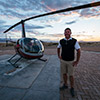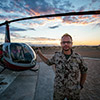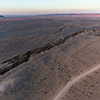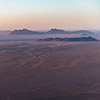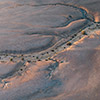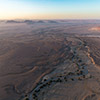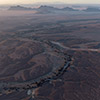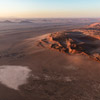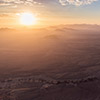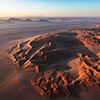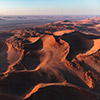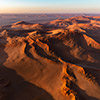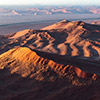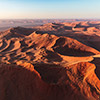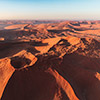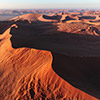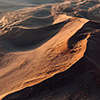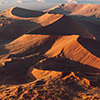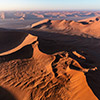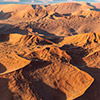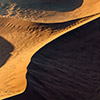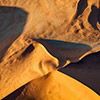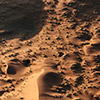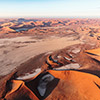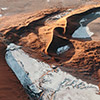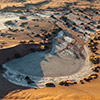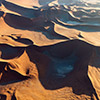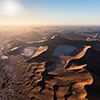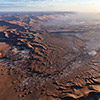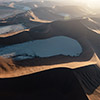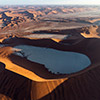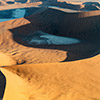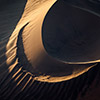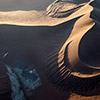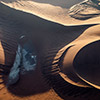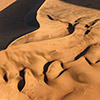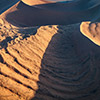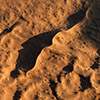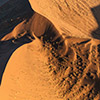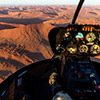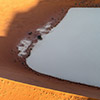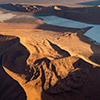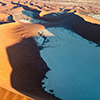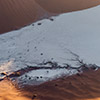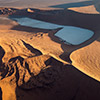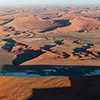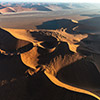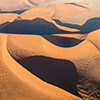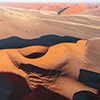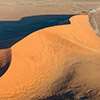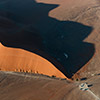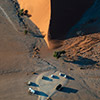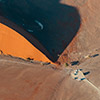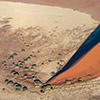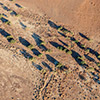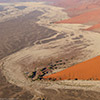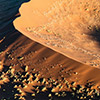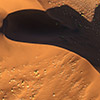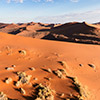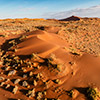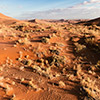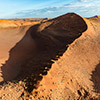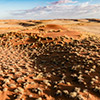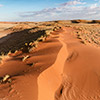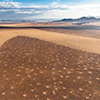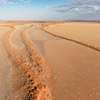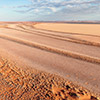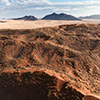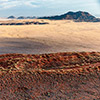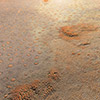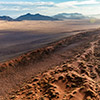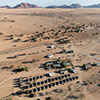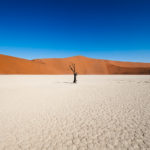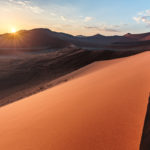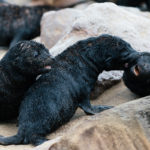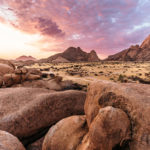Namib at Sunrise – Aerial Images of the Desert
With more than 80 million years of existence, Namib desert is the oldest on Earth. With day temperatures easily exceeding 120 °F it is also one of the world’s most hostile places. Despite all inhospitality it boasts with beauty, especially at sunrise or in the evening hours. Then the desert becomes on eye candy made by giant dunes, strong contrasts and hidden structures, that are being revealed best when seen from above with a helicopter flight.
At 5:45 we start into the Namib
It is about 4 o’clock in the morning when my vicinity wakes up. The count of ignorant people paying absolutely no attention to others is alarmingly high this morning in Sesriem, at the border of Namib desert. All they want to be first in the desert, but desperately fail already in the first seconds as they waste time being terribly unorganised or for their make-up.
Meanwhile it is 5 o’clock. The noisy bloggers, vloggers, Instagrammers and mega travellers of this world missed the inner park gate opening and are still not ready to go. My humble self is ready to leave of course as this morning I go into the desert with a helicopter. More specifically we will fly along the funnel being dug into the desert by Tsauchab River. Tsauchab is a dry river that’s water-bearing in the underground though. At its edge the giant red dunes pile up.
As discussed, agreed and confirmed the day before, I arrive the closed outer main gate on time at 5:00 in the morning. But…, there is nobody. I wait and wait. Slowly time becomes short and shorter. Our meeting spot, the Sossusvlei Lodge, is literally around the corner, but there’s a nasty barb wire fence between me and my take-off briefing. Since nothing happens for longer time I leave my jeep where it is and climb the fence to meet my departure appointment.
A couple of scrapes later I can join the take-off briefing and we can depart on time at 5:45 in the morning. Our helicopter is a twin-blade rotor Robinson R44. Its reciprocating engine will leave a mark on the whole experience of flying. It accelerates our aircraft up to 200 kph, but also demands a very calm photographer hand as well as a very short shutter time when it comes to the camera and lens system being used.
A couple from my “tulip and cheese” neighbour country joins the ride. The Dutchies are funny and speak German splendidly as they are camping in Northeast Germany every year. Our pilot speaks Afrikaans, that’s very close to Dutch, as well as English, but since the Dutchies know German very well our pilot Wim decides to talk and explain in his old colonial mother tongue.
Aerial images of light-flooded sand mountains
Having barely left the ground, our central star pushes itself above the horizon already. It floods the mountains of near Namib Naukluft Park with light. From above we become witness of the world’s bloggers, vloggers, Instagrammers and mega travellers (late) mad dash for Dune 45. We can spot them on the ridge trying to climb the dune. Begin totally unimpressed by that drama of mass tourism, sunrise starts a timeless spectacle. That is when the dunes start to glow red because of their ferrous oxide carrying sand.
But let’s get back to nature and beauty as from above we can spot the course of dry Tsauchab River and how it disappears in the desert. Before dying slowly in an ocean of sand, Tsauchab outcrops at the Sesriem Canyon. The way of underground water is easily perceptible by framing trees. From above they look evergreen and strong enough to defy desert hazards. At the end of its underground route, that is roughly half an hour flight from Sesriem, the salt and clay pans Sossusvlei, Deadvlei, Naravlei and Hidden Vlei wait for us.
From our helicopter we can spot the ocean in the far distance. Actually Tsauchab wouldn’t have a long way to reach the Atlantic but desert conditions are too hard for it. The salt and clay melange being transported by its vanishing water creates the pans. They are wonderfully surreal places. And Deadvlei, the one with the petrified Acacia trees, was even backdrop to The Cell, a film with Jennifer Lopez.
We have to turn around again and head back to Sesriem. On the way back we sweep across countless dune ridges veeery low and veeery fast. The dunes over here are a little grass-covered. A little off the main track and its dunes there is quite some vegetation involved in the desert. Shortly before approaching Sesriem from the north we can also see the mystic fairy circles Namib is famous for. Their emergence and character is still a miracle to nowadays since. Well, and the it’s time to land again…
